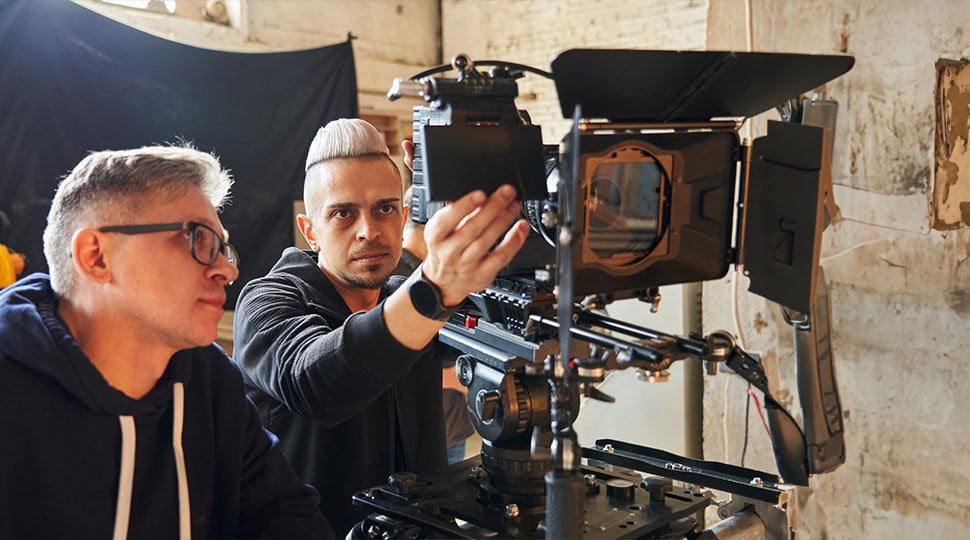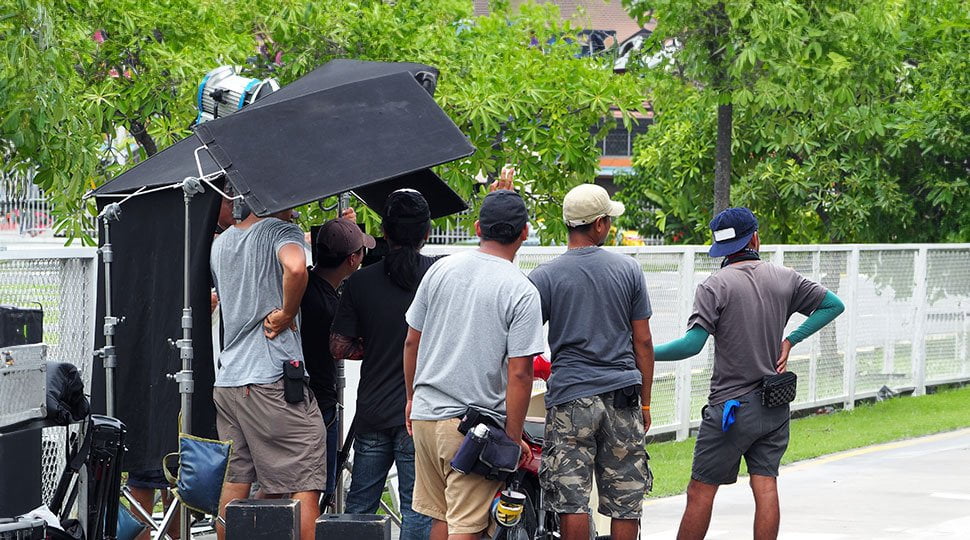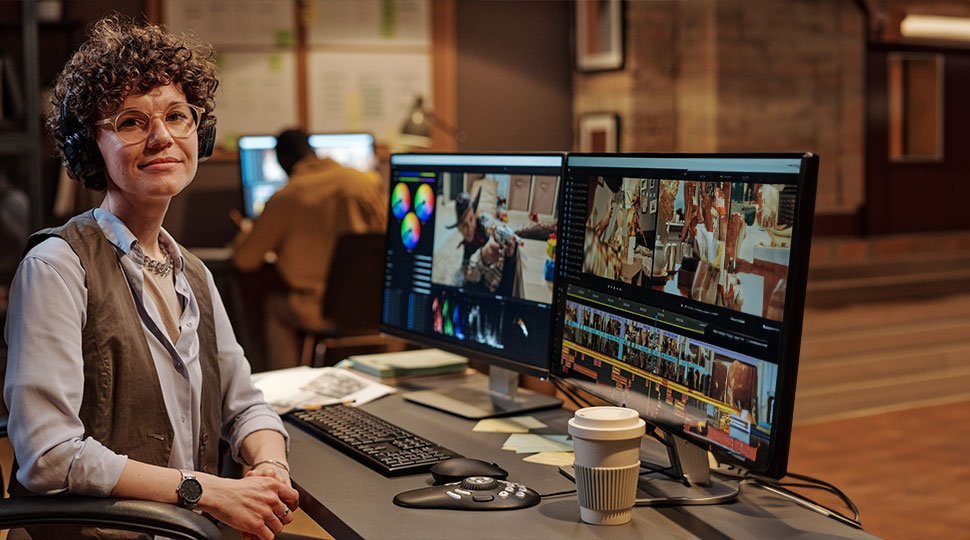Under the magic spell of the silver screen, audiences are mesmerized by compelling performances. Yet, these charismatic displays are born far from sparkling premieres, inside audition rooms. Crafting effective actor auditions are key to shaping fantastic movie experiences for viewers. The right casting decisions can elevate a film to unparalleled heights of success, making the art of auditioning a significant factor in moviemaking.
The Script as Your Guiding Star
In the world of film-making, casting serves as the lifeblood that fuels the livelihood of storytelling. Remember that bringing memorable casting to life starts with the script. This humble blueprint, adorned with words and narrative cues, is in fact, more than just a story etched on paper. It is your guiding star providing a clear track on the journey of character building. It illuminates vital cues for understanding the soul of the characters and their complexities, bringing them out from the shadows of black and white pages to a world brimming with emotions.
Mastering the art of script analysis can unravel a wealth of knowledge about the characters. The characterization, internal motivations, emotional arcs, peculiarities and hidden layers within each role can only be unveiled by scrupulously studying the script. This in return, leads to better knowledge of what traits to look for in actors and establishes the benchmarks for performances.
The script gives clues about the dynamic between characters, the relational nuances, and tensions that are essential in forming believable on-screen chemistry. As such, the essence of the script acts as the foundation for the audition process, defining the trajectory for casting directors in making strategic decisions.
However, scripts in their raw forms can be enigmatic, and its core meanings may require decoding. Creativity, analytical thinking, and taste play crucial parts in recognizing the hidden depth within scripts. This is the realm where the director’s vision converges with the writer’s intent. It’s the director’s crucial role to peer through the script’s pages, comprehend their essence and efficiently communicate these nuances to potential actors.
Communicating the screenplay’s demands accurately to potential actors forms a bridge between the character’s fictitious life and the actor’s authentic reflections. It also ensures alignment of the performance with the envisioned narrative. This gossamer thread of communication ties the actor’s understanding to the character’s emotional core, making it crucial in conducting captivating auditions.
Creating compelling casting, therefore, begins with a profound understanding of scripts, coalescing careful analysis with artistic visualizations. The script becomes your guiding star in the vast galaxy of casting, breathing life into characters, and setting them on their journey on the silver screen. Following their luminescent path guides you into making casting decisions that rightfully serve the spirit of the story and resonate profoundly with the audience.
Crafting Memorable Audition Sides
Significance of Audition Sides
Audition sides are an indispensable part of the casting process. Often considered as the blueprint for actors’ performances, they are not merely chronological scripts but anecdotes of emotional depth and character exploration.
These are strategically selected scenes that contain a range of emotions, enabling casting directors to gauge character fit and the actor’s ability to transcend the barriers of the script. It’s through these scenes that actors can delve into the core of their characters, highlight their psychological and emotional transformation, and inject their personal artistic flair into the role.

Craftsmanship and Selection
The process of crafting memorable sides requires more than just skill—it requires empathy, vision, and adaptability. The selected scenes have to be powerful enough to motivate potential actors yet intricate enough to give them room to experiment and showcase their versatility.
Thus, the requirements of the role, the emotional arc of the scene, and the flexibility to interpret character behavior are all essential considerations when constructing memorable audition sides.
But choosing the scene is just the beginning. It requires adept manipulation of text and situation, retaining the core yet offering versatility. This offers the aspirants an opportunity to display their interpretation, innovation, flexibility, and control over their performances.
The Role of Casting Directors
The role of casting directors in this process is pivotal. They must deftly mediate between the director’s vision and the actor’s craft, ensuring that the audition sides are an accurate representation of the character’s depth. A good casting director needs to anticipate reactions, tailor sides to incite nuanced performances, and foresee the potential impact of the actor’s interpretation.
Room for Experimentation
While the audition sides help to regulate and structure auditions, they also open up a world of diversity and opportunities. It’s not just about getting the lines right—it’s about capturing the spirit, unpredictability, and essence of the character. Thus, it’s essential to create audition sides that allow the actor to explore and demonstrate a range of talents, showing how multifaceted they can be.
Devising a Template
It’s also wise to remember that audition sides are a template, a guide for the actor, and not a rigid framework. The sides should encourage actors to play with emotions, pace, intensity, expressions – and not limit their performances to a preset notion.
The First Impression - Creating Impactful Casting Notices
Casting notices are essentially the first point of interaction with potential actors and the doorway towards finding the right fit for your storytelling. A lucid, informative, and enticing casting notice marks the starting point of a journey that could spark an unforgettable on-screen charm and narrative power. Thus, creating an impactful casting notice is integral to the success of a film’s casting process.
In this regard, here are essential elements to consider.
Introduction and Overview of The Project
It’s crucial to provide a succinct yet enticing overview of the project. This includes the project’s title, genre, intended platform (be it theater, film, television or web series) and a brief summary of the storyline. It’s important to give actors a feel for the tale they might become part of, giving them ample reason to feel excited about the prospect.
Role Specifications
The casting notice should detail the roles being auditioned. This includes providing information about each character such as their age, gender, personality quirks, and any other specific qualities central to the portrayal of the character. Accurately understanding the traits of the characters they’re auditioning for, aids actors in crafting their auditions appropriately.
Essential Project Information
Actors need to know essential project details when they’re considering an audition. This includes information about the director and production company, anticipated production dates and location, audition venue and dates. If necessary, also provide payment information – as clear and transparent as possible.
Procedure and Submission Details
Being specific about what the audition process entails can be a big help to actors. Clearly mention what they need to prepare for the audition – whether they need a monologue, to sing, to dance, or to prepare a specific scene. Also, guide them through the process of applying for the audition, specifying what they need to submit, how they need to submit it, and any deadlines.
Craft a Captivating and Engaging Tone
The tone of the casting notice is also vital; it forms an immediate impression about the process actors are stepping into. Crafting the notice in a way that is both professional and engaging is important. Remember, you are not just informing about the project but selling the vision of it.
Nailing the Audition Space and Atmosphere
The Importance of the Audition Location
Creating captivating auditions is not only about having skilled actors or an inspiring script – the location of the audition plays an equally important role. Where the auditions take place can have a substantial impact on the overall energy of the auditions, the performance of the actors, and the final caught-on-camera outcomes.
Choosing a suitable audition location means considering the logistics, the ambiance, and the functionality of the space. Good acoustics, decent lighting, comfortable seating arrangements, and enough room for actors to move around freely are all factors that ensure the smooth conduct of auditions. An inappropriate location, on the other hand, may hinder the potential performances of the actors, besides posing issues for the casting crew.
Crafting the Ideal Atmosphere
The atmosphere of the audition room is a significant determinant in setting the tone of the auditions. The ambiance should be inviting and offer warmth, crucial to melting away the initial jitters and promoting more confident, relaxed performances. Mirroring the genre of the impending project, including elements that reflect the themes of the script, and utilizing lighting that complements the mood, can greatly enhance the atmosphere.
The set-up of the room should be both professional and cozy, setting high standards yet instilling a sense of comfort. A well-arranged room that adheres to a systematic procedure can inspire confidence in actors and motivate them to give their best shot, thereby nurturing memorable auditions.
Contributions of the Casting Team in Setting the Tone
While the physical aspects of the location and atmosphere are important, the casting team has a significant role in shaping the audition’s emotional climate. By creating an environment that encourages creativity and value individual talent, directors and casting professionals can alleviate the pressure that actors often feel during auditions. This includes fostering an open dialogue, being approachable, and offering constructive feedback.
The Effect on Actor Performance
Research suggests that environmental factors can substantially influence an individual’s performance. A positive and encouraging audition space can stimulate actors’ abilities, offering them an environment in which they can express themselves freely, explore their creative boundaries, and deliver stellar performances. This, in turn, could lead to the discovery of unexpected aspects of their roles and introduce fresh, innovative interpretations of each character.
Open Call vs. Invitation-Only Auditions
Determining the audition process’s structure is a critical aspect that directly correlates with the overall vision and success of a project. Between an open call that offers accessibility and democratic appeal, and an invitation-only route that targets specific talent profiles, the choice is consequential. To set the tone for efficient auditions and effective casting, managing expectations accurately is the key.
Defining the Approach
The active comparison between open call and invitation-only auditions presumes distinct advantages for either mode. Thus, formulating a convincing alignment with the project’s objective surfaces as the principal task.
In open-call auditions, a wider net is cast, allowing undiscovered talent an equal platform to compete. In contrast, the invitation-only route ensures concentrated auditions with candidates handpicked based on the casting director’s initial selection criteria. Deciding between the two weighs heavily on the scope and the depth of the character(s) that need to be cast.
The Democratisation of Open Call Auditions
An open audition, at its core, is a charming chaos open to everyone. This democratic approach provides actors, regardless of their experience or exposure, an opportunity to audition for roles they might not otherwise access. Besides, open casting brings an element of surprise and spontaneity to the process. It allows casting directors to discover diverse talent, encouraging unique interpretations of characters and possibly unearthing the next big star.
However, with a larger talent pool, maintaining efficiency during open-call auditions becomes a challenge. It’s pivotal to manage such auditions carefully and systematically to ensure each actor gets enough time to showcase their skills.
The Targeted Approach of Invitation-Only Auditions
When working on a tight deadline or searching for a very specific set of skills or appearance, an invitation-only audition can be a practical choice. With the targeted method of invitation-only auditions, the casting team sends invites to a selected group of actors who match specific criteria. This presents a reassuring sense of control and is generally more time efficient.
The invitation-only format also promotes the essence of ‘exclusivity,’ and often attracts seasoned actors, thereby shaping a set of intrinsically motivated, self-disciplined, and focused participants. However, this approach might also limit the influx of new talent and fresh interpretations of the role.
Importance of Clear Communication
Regardless of the audition approach, clear and concise communication is crucial in managing expectations on both sides. It is essential to provide accurate information about the audition process, the role’s requirements, and the follow-up process, to avoid misunderstandings or mishaps that could impair the casting process.
The Art of Giving Direction During Auditions
Understanding the Director’s Role
In the intricate process of bringing a script to life on screen, casting stands as one of the pivotal steps. A director’s role here goes beyond just observing – it involves guiding actors through the auditioning journey, leading them to portray their best version of the character. The clarity and precision of the director’s guidance can significantly influence the actor’s performance, molding the audition’s effectiveness.
Delivering Actionable Direction
One of the keys to successful casting lies in the ability of the director to provide clear and actionable feedback. This includes communicating character intricacies, subtext, narrative progression and nuances that the actor needs to encompass. The feedback or directions should be specific and tangible, allowing the actor to understand and apply it to their performance instantly.
Maintaining Fluidity in Direction
While providing clear direction is crucial, maintaining an element of fluidity is equally essential. It allows actors the flexibility to experiment with their characters, testing varied emotional ranges and responses. By facilitating this freedom, directors can tap into unexpected portrayals of characters, possibly leading to more authentic and impactful performances.
Fostering a Collaborative Atmosphere
The dynamics within an audition room greatly influence the result of the audition process. Fostering a collaborative atmosphere, where actors feel valued and comfortable, brings out the best in their performances. This involves engaging in open dialogues, being receptive to actors’ input and articulating adjustments in an encouraging tone.
Final Word
The ability to give effective direction is both a science and an art for a director. It balances between sharing a precise vision and leaving room for improvisation and creativity. By mastering this, a director can cultivate efficient auditions, unearthing performances that resonate with the envisioned narrative. After all, the process of auditions is not merely selection, but rather, it signifies the birth of characters, marking their first steps into the world of storytelling.
Spotlight on Chemistry - Callbacks and Chemistry Reads
Understanding the Value of Chemistry
As the casting process advances, filmmakers are often left with talented performers who have exhibited exceptional skills during their auditions. However, the decision is not solely dependent on individual prowess. A critical factor to consider is the potential chemistry between co-stars, which proves vital for crafting memorable casting.
Screen chemistry contributes significantly to a film’s success, creating on-screen relationships that viewers can connect with and root for, be they romantic, platonic or full of angst-filled conflict. A chemistry read aids in evaluating this critical interaction between potential co-stars, assessing whether their real-life connection translates well on the screen.
Incorporating Chemistry Reads in Callbacks
Chemistry reads often become an integral part of the callback process. After an initial round, or rounds, of auditions, a small selection of actors are chosen for the callback stage where chemistry between potential co-stars is evaluated.
These chemistry reads can be critical to the casting process, especially in ensemble casts or roles involving intimate relationships. Witnessing the actors interact, seeing their connection, and how they respond to one another can provide insights a solo audition might not. It’s during these chemistry reads that dynamic performances truly come to life, often crafting unforgettable silver-screen pairs.
Implementing Successful Chemistry Read Strategies
Strategies for successful chemistry reads vary but one fundamental rule remains – facilitating an environment where potential co-stars feel comfortable enough to interact organically. Simple ice-breaking activities, improvisational games, scene-reading, or unscripted interaction often yield authentic reactions and portray the raw chemistry present between actors.
The director’s role during these sessions is to encourage actors to explore their characters’ relationship dynamics and provide them with gentle guidance. Genuine reactions, emotional congruence, and a shared rhythm often indicate chemistry that can potentially create magic on screen.
Embracing Diversity and Inclusivity in Auditions
As the film and television industry moves towards wider representation, auditions now play a pivotal role in bringing diversity and inclusivity to the forefront. The importance of diverse casting cannot be overstated; it not only ensures that a broad array of stories and perspectives are shared, but it also offers a realistic reflection of society.
Casting a Wide Net
Even before auditions begin, crafting a casting notice that encourages applications from diverse actors is the launching pad for an inclusive audition process. This includes actors from different racial and ethnic backgrounds, genders, sexual orientations, ages, abilities, and more. By casting a wide net and being open to different interpretations of roles, directors can tap into a wealth of distinct talent.
Ensuring a Safe Space
It’s also crucial to ensure that auditions are a safe space for all actors. It means being aware and respectful of different cultures, experiences, and identities. It also means providing facilities for actors with disabilities, ensuring the audition space is accessible and accommodating to their needs.
Hiring Diverse Creative Teams
The importance of having diverse voices and perspectives behind the camera should not be overlooked. Having a crew that reflects a wide range of experiences can help inform casting decisions and ensure a respectful and inclusive auditioning environment.
Exploring Authentic Narratives
Inclusive casting also means exploring authentic narratives. If a role calls for a specific identity or experience, casting an actor who authentically represents that identity can add to the depth and realism of the character portrayal.
The Power of Representation
Finally, diverse casting has the power to challenge stereotypes and observer bias, educating and resonating with a wider audience. It makes room for a larger variety of voices and stories on screen, paving the way for more inclusive storytelling that resonates with a global audience.
That's A Wrap!
By focusing on these crucial facets of the audition process, you’ll craft an audition experience that’s more than just finding the right actors. It becomes an exciting, rewarding journey, breathing life into characters and creating the enchantment we so love about moviemaking.








